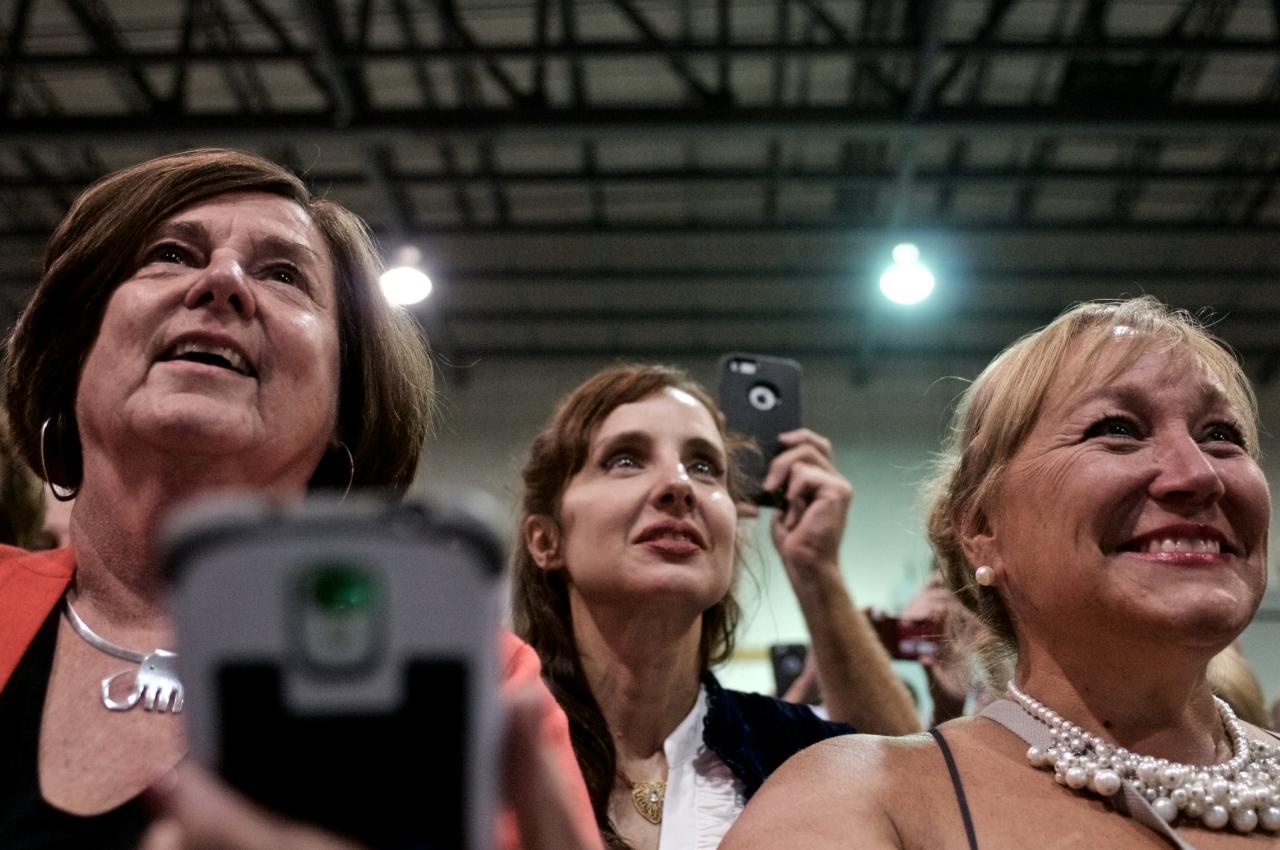
The U.S. Republican Party recently introduced a healthcare bill (quickly termed Trumpcare) to repeal and replace Obamacare (or the Affordable Care Act; the two are the same despite widespread confusion). More legislation is in the works – individual and corporate tax cuts, infrastructure projects, regulatory rollbacks, immigration restrictions and changes in trade treaties. Each of these policies will have distributional consequences going forward.
If anything, the 2016 election demonstrated that there is a significant segment of the population chafing at their existence, who feel left behind and want a return to the golden age when the effects of growth and rising incomes trickled down to everybody. Donald Trump’s genius was in identifying this section of the electorate and convincing those voters that he was their champion. As the two charts below show, Trump’s vote share was higher in states with lower household incomes and in states where there was a larger fraction of population with only a high school degree or less. Trump also won 62 percent of rural voters easily while Hillary Clinton won urban voters decisively, 59 percent to Trump’s 35 percent. Essentially older, rural, lower income and less educated voters shifted and became Trump supporters.
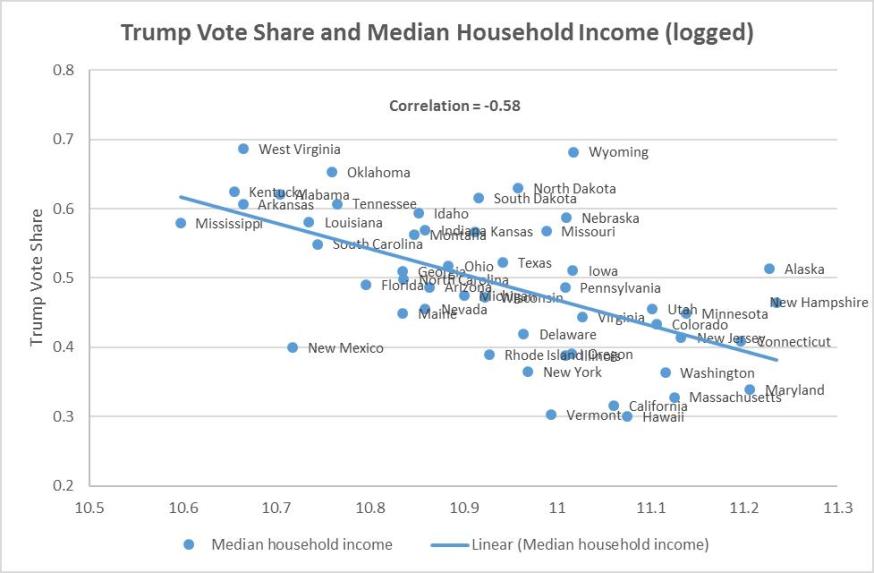
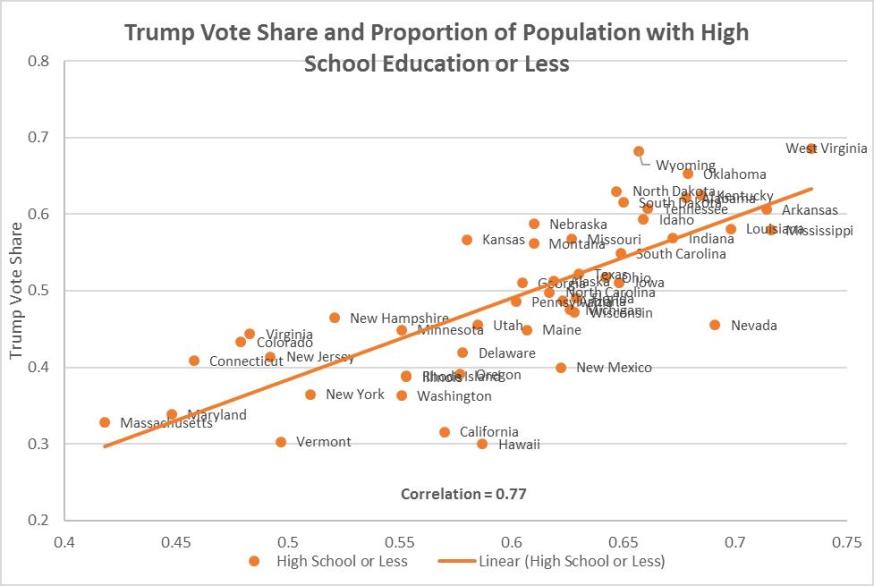
The plight of elites
Before answering that question, we must pause to examine Trump’s unique relationship with his supporters, arguably a pure product of the “post-truth” era. As Peter Thiel said and those at Davos concurred, Trump was to be taken seriously, but not literally. Trump voters “knew” that promises to repeal Obamacare, restrict immigration, tear-up trade agreements and build a wall on the Mexican border were simply cheap talk. After all, political platforms and detailed plans are simply aspirations disconnected from reality. A Rasmussen poll in 2014 found that 83 percent of U.S. voters believed that “most politicians” did not keep promises made on the campaign trail. Only 4 percent thought they did.
This does feel right at the gut level, does it not? It makes us feel wise and cynical. But it turns out that this is not quite right. Political scientists, as elites are wont to do, have been researching this question for a long time. They found that, over the past 50 years, U.S. presidents fulfilled two-thirds of their promises on average (see table below).
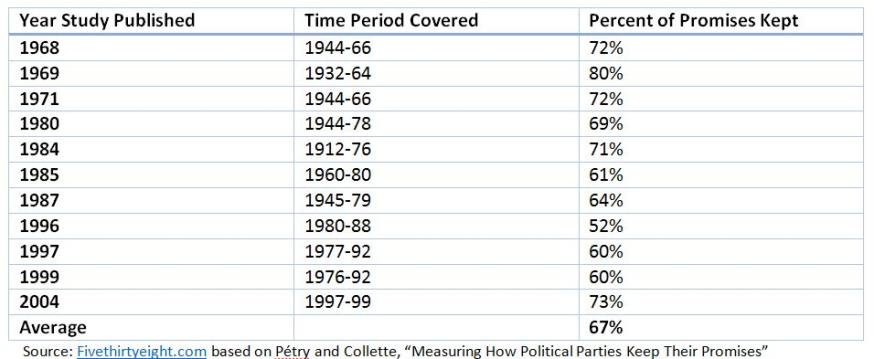
So, which should we trust? Our gut, susceptible as it is to truthiness, or the data that asserts that U.S. presidents keep two-thirds of their electoral promises? Is Trump an outlier, as Thiel seems to suggest, who shouldn’t be taken literally? Trump has been in office for just two months but, with that caveat in mind, let’s look at his campaign promises and actions taken.
| Trump Promise | Outcome So Far | Date |
|---|---|---|
| Tear up trade treaties | U.S. withdraws from Trans-Pacific Partnership | 23 January |
| Build the wall | Orders a wall. Request for proposals from contracts; plans to award contracts by mid-April, 2018 Trump budget request includes US$2.6 billion to begin planning and building wall | 25 January |
| Restrict immigration; ban Muslims | Ban on refugees and temporary suspension of entry from seven Muslim-majority nations. (Later found to be illegal by courts.) Stepped up deportation of illegal immigrants | 27 January |
| Repeal and replace Obamacare | House Republicans introduced a plan to repeal and replace parts of the health law of former President Obama | 7 March |
| Environmental rollbacks | Greenlight Dakota and Keystone pipelines; Yet to withdraw from Paris climate agreement | 24 January |
| Lower taxes; rebuild infrastructure | Widely expected to be the next item on the agenda |
Sixty days into the Trump presidency and this is an ambitious push towards keeping campaign promises. It is even more impressive considering the virulent opposition from the media, lawyers, the Democrats and organised protestors.
Impact on inequality: Trumpcare vs. Obamacare
There are two aspects to the distributional impact of the new health care act. First, Trumpcare provides subsidies or tax credits to buy insurance just like Obamacare but the targeted segments of the population and amounts differ from Obamacare. This has consequences for how many people lose/gain insurance compared to Obamacare. The graph below, from the New York Times, shows in green those who gain in tax credits under Trumpcare relative to Obamacare, while in red are the segments that lose. Trumpcare is less generous to older and poorer segments of the population as well as those that live in high-premium areas (sparsely populated rural areas and states like Alaska). In other words, the precise segments that Trump won by comfortable margins in the last election. At the same time, premiums are likely to decline with Trumpcare, but this is mainly achieved by pushing sicker patients into the ranks of the uninsured or into more barebones plans.
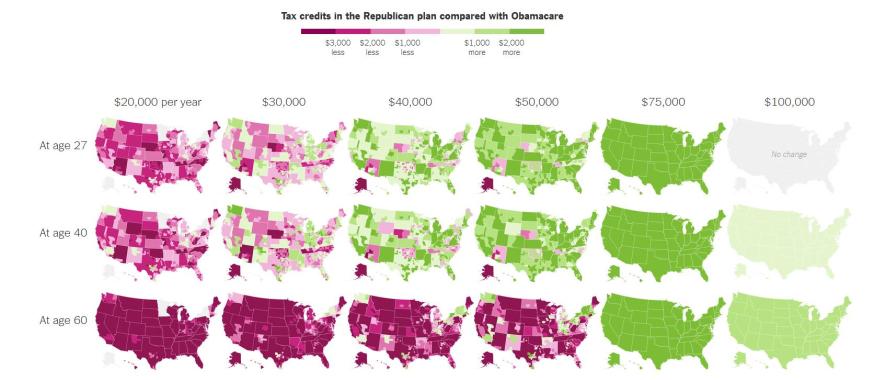
Second, there is the issue of the tax burden. Under Obamacare, individuals making more than US$200,000 and families making more than US$250,000 were hit by a 0.9 percent tax on wage income and a 3.8 percent tax on investment income. Trumpcare repeals these two taxes (amongst others) which amounts to a tax cut of US$275 billion for households making more than US$250,000 a year. Members of the top 0.1 percent, who each on average make more than US$3.75 million annually, would get an average tax cut of US$165,090 while those in the bottom 90 percent will receive $0 in tax cuts. This ignores potential general equilibrium effects since Trumpcare reduces the federal deficit by US$337 billion and may increase economic growth. It reduces the deficit by making health insurance less generous especially through Medicaid which targets the poor, and by pushing 24 million people into the ranks of the uninsured, though this number is disputed. All these changes will exacerbate income inequality, especially inequality at the top. [1]
Compare these outcomes to what Candidate Trump promised on the campaign trail and a yawning gap emerges. Overall, if you are rich, urban-dwelling, young and healthy, or some combination of these, Trumpcare makes financial sense for you. Therefore, dear reader, if you are the archetypal college town, latte-drinking, quinoa-eating, globetrotting, intellectual elite, in other words, a Clinton supporter, you will do great with Trumpcare!
Maybe we should take Trump literally, but not seriously.
Pushan Dutt is the Shell Fellow of Economic Transformation and a Professor of Economics and Political Science at INSEAD. Professor Dutt directs the Asian International Executive Programme.
Follow INSEAD Knowledge on Twitter and Facebook
[1] Many healthcare and political wonks believe that the new healthcare bill is unlikely to pass due to the adverse consequences on the old, poor and sick.
-
View Comments
-
Leave a Comment





No comments yet.